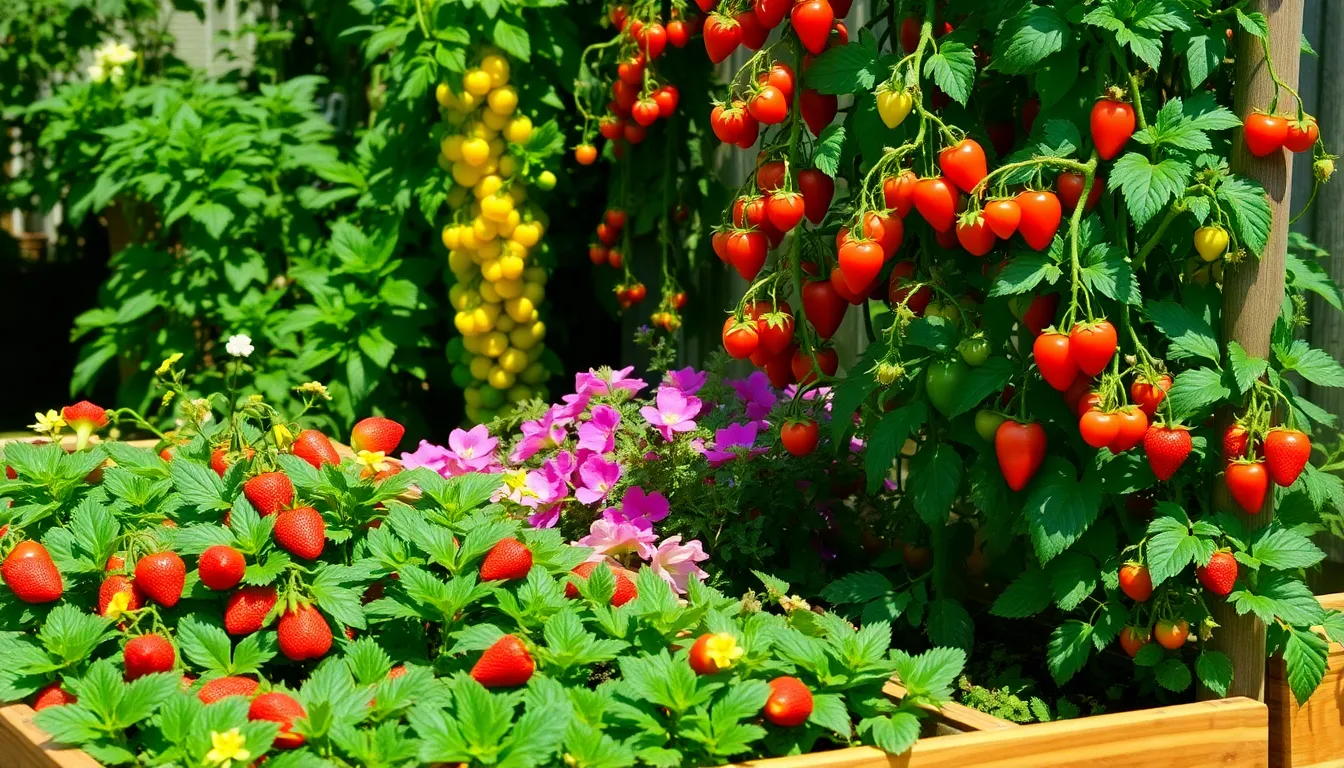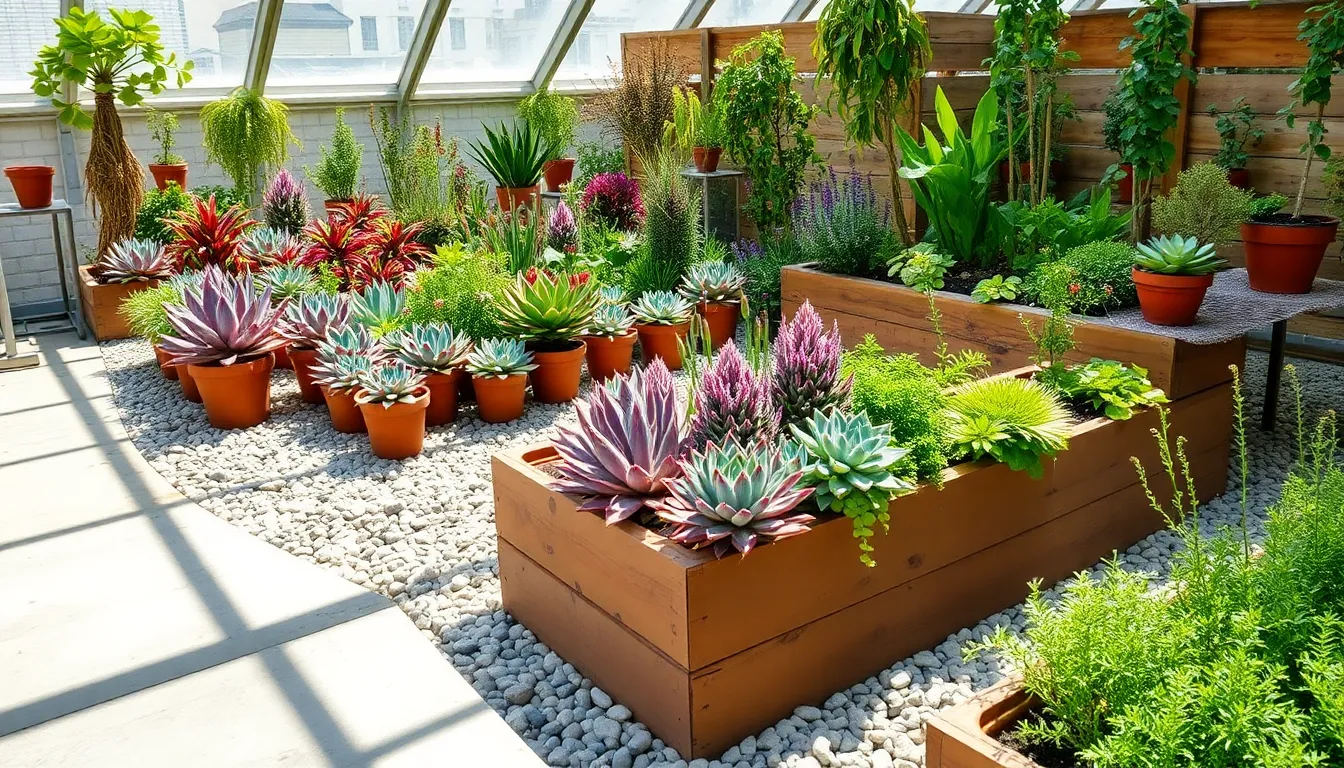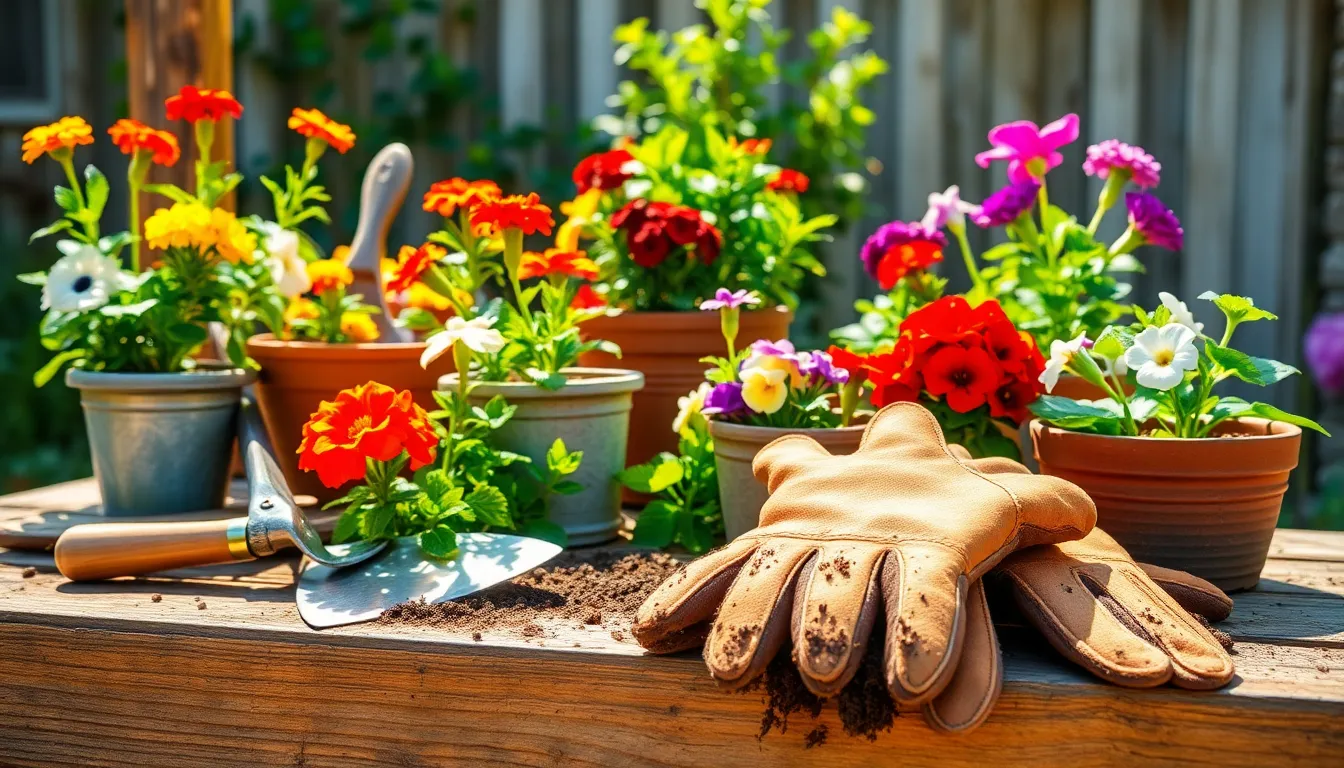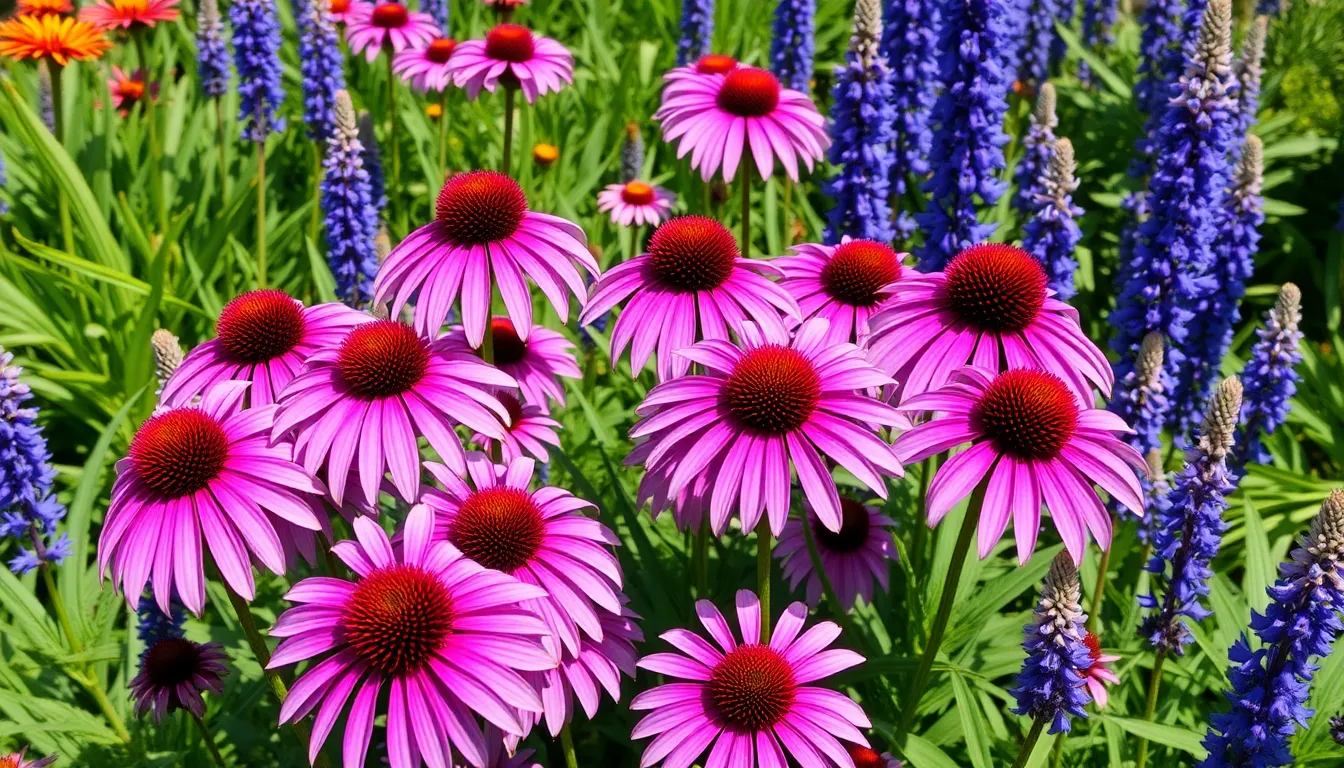Growing your own fruit garden can be one of the most rewarding experiences for both seasoned horticulturists and those just beginning their green-thumb journey. It’s a delightful endeavor that turns your backyard into a sanctuary of flavors, colors, and aromas, offering a taste of nature’s bounty right at your doorstep. This article is designed to introduce you to ten beginner-friendly fruit garden inspirations, ensuring you can dive into this fruitful hobby with confidence and excitement.
For newcomers, the world of fruit gardening may seem vast and complex, but rest assured, anyone can cultivate a thriving garden with a little guidance. Experienced gardeners will find fresh ideas to reinvigorate their existing plots, discovering new varieties or techniques that can transform their harvest. With these inspirations, you’ll learn about selecting the right fruit for your climate, understanding soil needs, and mastering simple care routines that will make your garden flourish.
We’ll explore creative layouts and combinations that maximize space and yield, ensuring you enjoy a bountiful harvest without feeling overwhelmed. Every suggestion is crafted to be as practical as it is inspiring, ensuring that your fruit gardening journey is both manageable and highly rewarding. Whether you’re dreaming of a berry-filled brunch or a citrusy splash in your summer drinks, these inspirations will empower you to turn those dreams into delicious reality.
Choosing Ideal Fruit Varieties
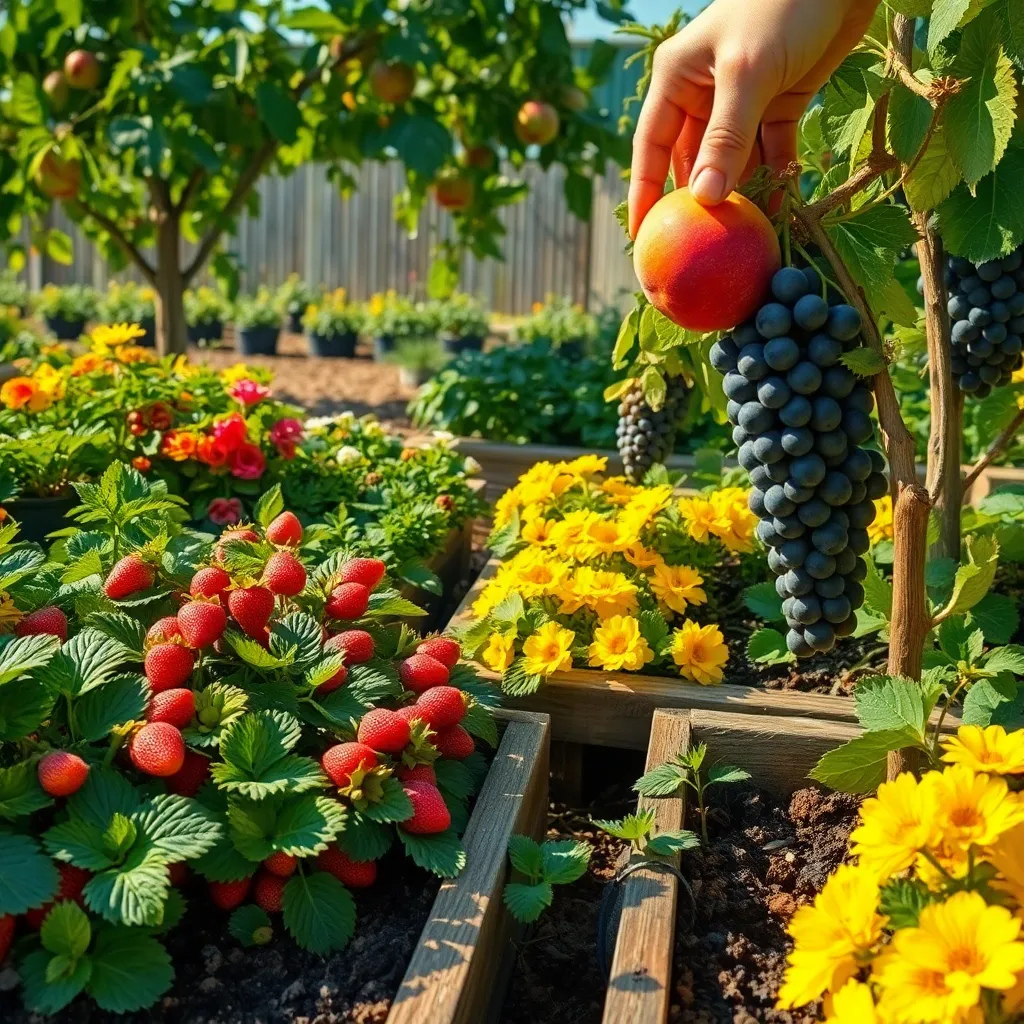
When choosing fruit varieties for your garden, consider your local climate and hardiness zone. Selecting fruit types that naturally thrive in your area will increase your chances of success and reduce the need for intensive care.
For beginners, starting with fruits like strawberries and blueberries is advisable due to their adaptability and minimal maintenance needs. Ensure that strawberries are planted in well-draining soil with ample sunlight, while blueberries thrive in acidic soil with regular watering.
Advanced gardeners might consider incorporating fruit trees like apple or peach, which require more space and a deeper understanding of pruning and pest management. Proper pruning techniques not only enhance fruit production but also improve tree health and longevity.
Utilizing companion planting techniques can also boost your fruit garden’s health and yield. For example, planting garlic or chives near fruit trees can naturally deter pests, offering an organic alternative to chemical treatments.
Simple Planning for Small Spaces
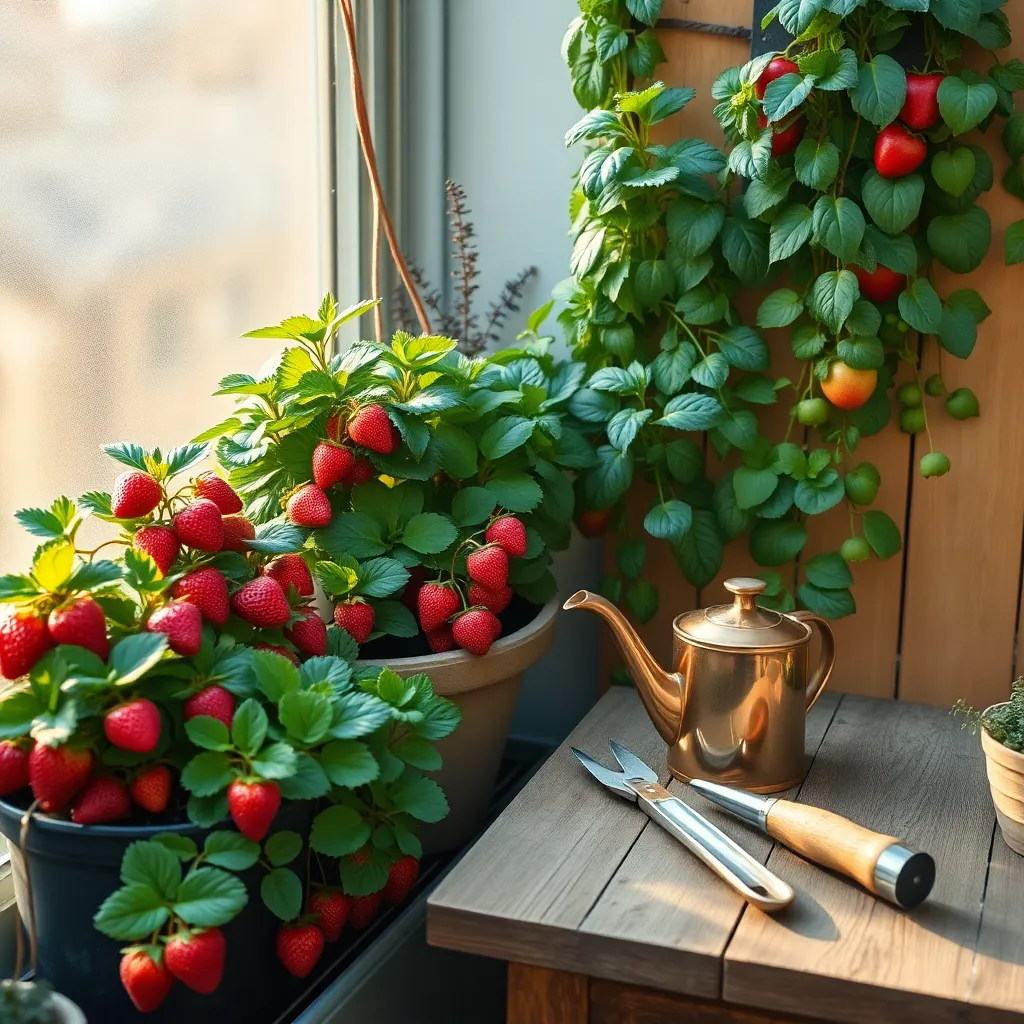
When gardening in small spaces, it’s essential to maximize every inch available. Consider using vertical gardening techniques like trellises or wall-mounted planters to grow fruits such as strawberries and tomatoes.
Containers are a small-space gardener’s best friend, offering flexibility and control over soil conditions. Choose containers that are at least 12 inches deep to accommodate the root systems of most fruit plants, ensuring they have sufficient room to flourish.
Light is a crucial factor in small spaces, as many fruits require full sun to produce abundant yields. Place your containers or planters in the sunniest spot available, and consider rotating them regularly to ensure even lighting.
Efficient watering is key in small gardens, where soil can dry out quickly. Use self-watering pots or add a layer of mulch on top of the soil to help retain moisture and reduce the frequency of watering.
Soil Preparation for Fruit Gardens

Preparing your soil correctly is crucial for a thriving fruit garden. Before planting, test your soil’s pH to ensure it is suitable for the fruits you wish to grow, aiming for a range of 6.0 to 7.0 for most common fruits.
Amending the soil with organic matter like compost can significantly improve its fertility and structure. Incorporate a layer of compost about two inches deep into the top six inches of soil to enhance nutrient availability and drainage.
For those dealing with particularly clay-heavy or sandy soils, consider adding gypsum or well-rotted manure. These amendments help improve soil texture and moisture retention, creating a more hospitable environment for fruit plants.
Incorporating a balanced fertilizer before planting can give your fruits a healthy start. Choose a slow-release fertilizer with an N-P-K ratio suited to your chosen fruit varieties, applying it according to package instructions for optimal results.
Installing Effective Drainage Solutions
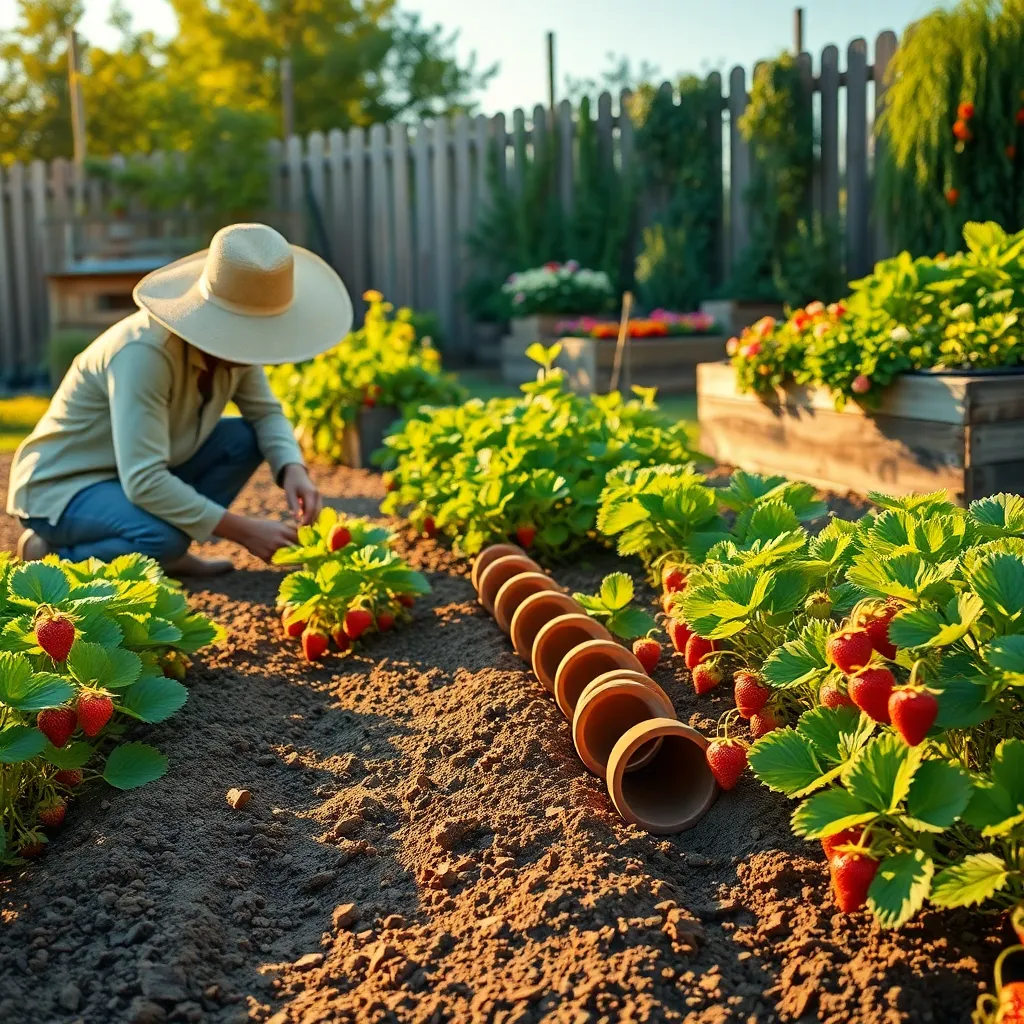
Proper drainage is crucial for a successful fruit garden, as it prevents waterlogged soil that can damage plant roots. To ensure effective drainage, start by selecting a well-draining soil mix, such as one containing a combination of loam, sand, and organic matter.
Consider raised beds if your garden area has heavy clay soil, as they allow you to control the soil composition and improve drainage. When constructing raised beds, make them at least 12 inches high and fill them with a quality soil mix to promote healthy root growth.
Another effective solution is to incorporate organic matter like compost or aged manure into the soil, which improves its structure and drainage capabilities. Regularly adding organic matter not only enhances drainage but also enriches the soil with nutrients, benefiting your fruit plants.
For more advanced gardeners, installing a French drain can be a game-changer for managing excess water in your garden. A French drain involves digging a trench and filling it with gravel and a perforated pipe, which redirects water away from your fruit garden to prevent pooling.
Sunlight Needs for Fruit Plants
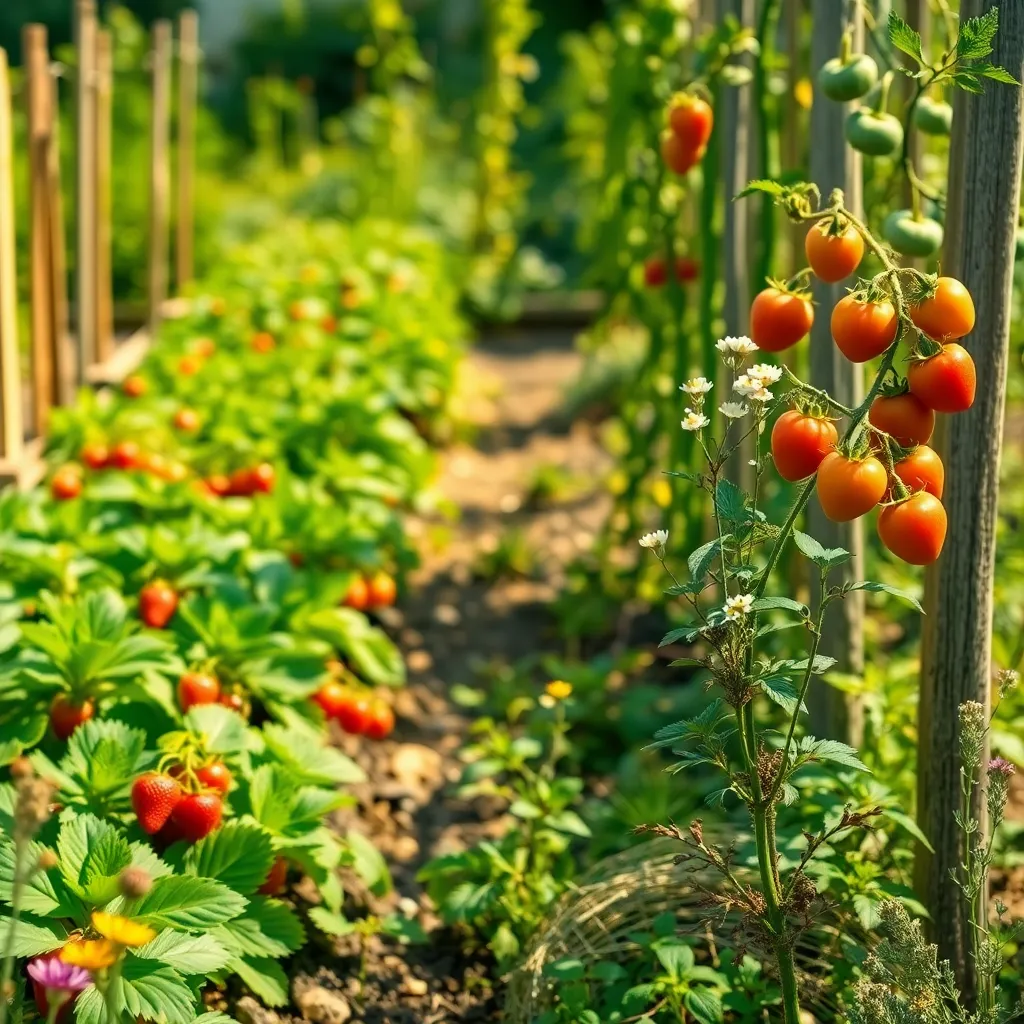
Understanding the sunlight needs of fruit plants is crucial for their successful growth. Most fruit plants require abundant sunlight, with at least 6 to 8 hours of direct sun each day to thrive.
For beginners, starting with fruit plants that tolerate partial shade can be a smart choice. Berries like raspberries and blackberries can produce well even with a few hours of morning sun.
Advanced gardeners might explore espalier techniques to maximize sun exposure. This method involves training fruit trees to grow flat against a trellis or wall, optimizing sunlight capture and space utilization.
Consider the direction and location of your planting area to ensure plants receive the needed sunlight. Positioning your fruit garden on the south or west side of your property can help achieve maximum sun exposure throughout the day.
It’s essential to regularly assess the light conditions as seasons change, adjusting plant placement if necessary. Observing your garden’s light patterns ensures each plant receives the optimal amount of sunlight for peak fruit production.
Efficient Watering Techniques Explained
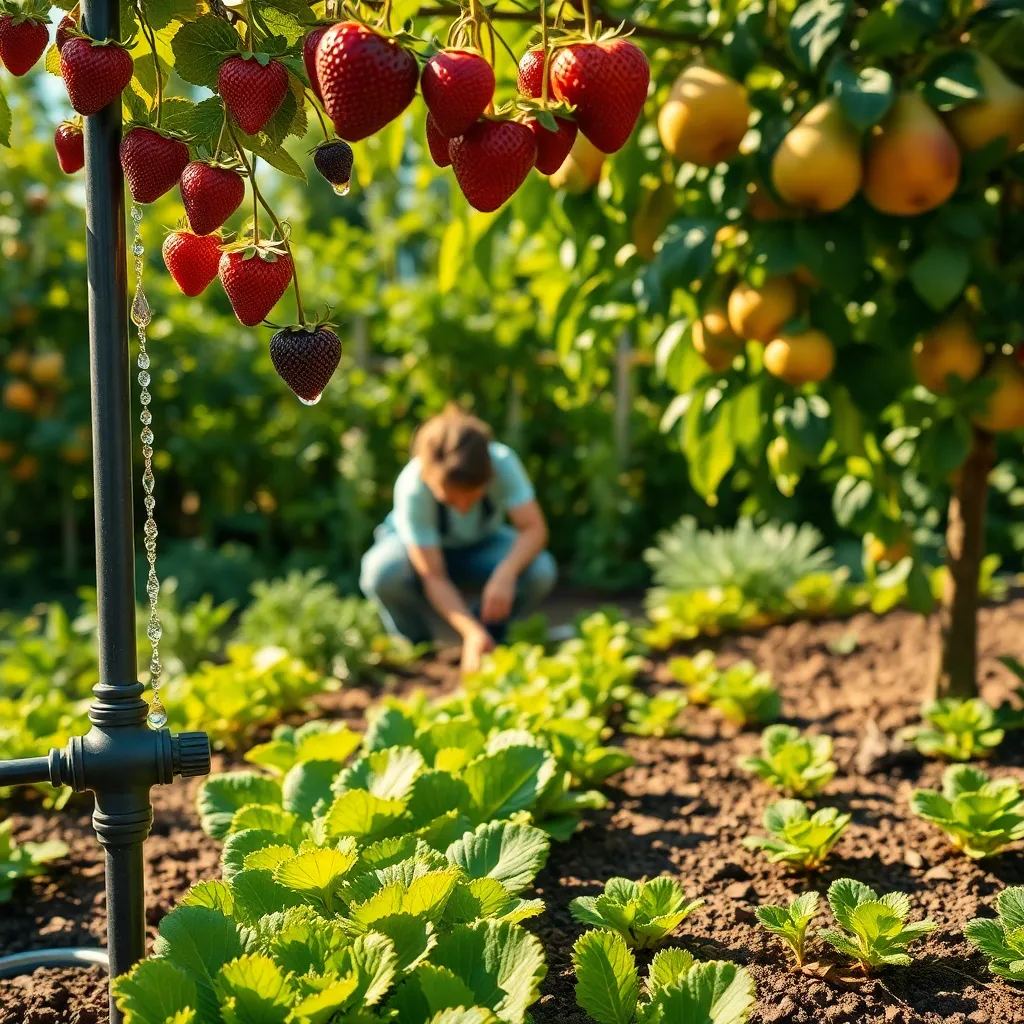
Efficient watering is crucial for a thriving fruit garden, ensuring plants receive the moisture they need without wasting resources. To start, consider installing a simple drip irrigation system, which delivers water directly to the plant roots and minimizes evaporation.
Alternatively, hand-watering with a soaker hose can be both effective and economical. This method allows water to seep slowly into the soil, ensuring thorough saturation with minimal runoff, and it’s perfect for small to medium-sized gardens.
Watering frequency depends on factors like soil type, climate, and the specific needs of your fruit plants. Generally, fruit trees and bushes prefer deep watering once a week rather than shallow, frequent watering, as this encourages roots to grow deeper into the soil.
For those with sandy soil, which drains quickly, more frequent watering may be necessary to maintain adequate moisture levels. In contrast, clay soils retain moisture longer, so be careful not to overwater, as this can lead to root rot.
Natural Pest Control Methods
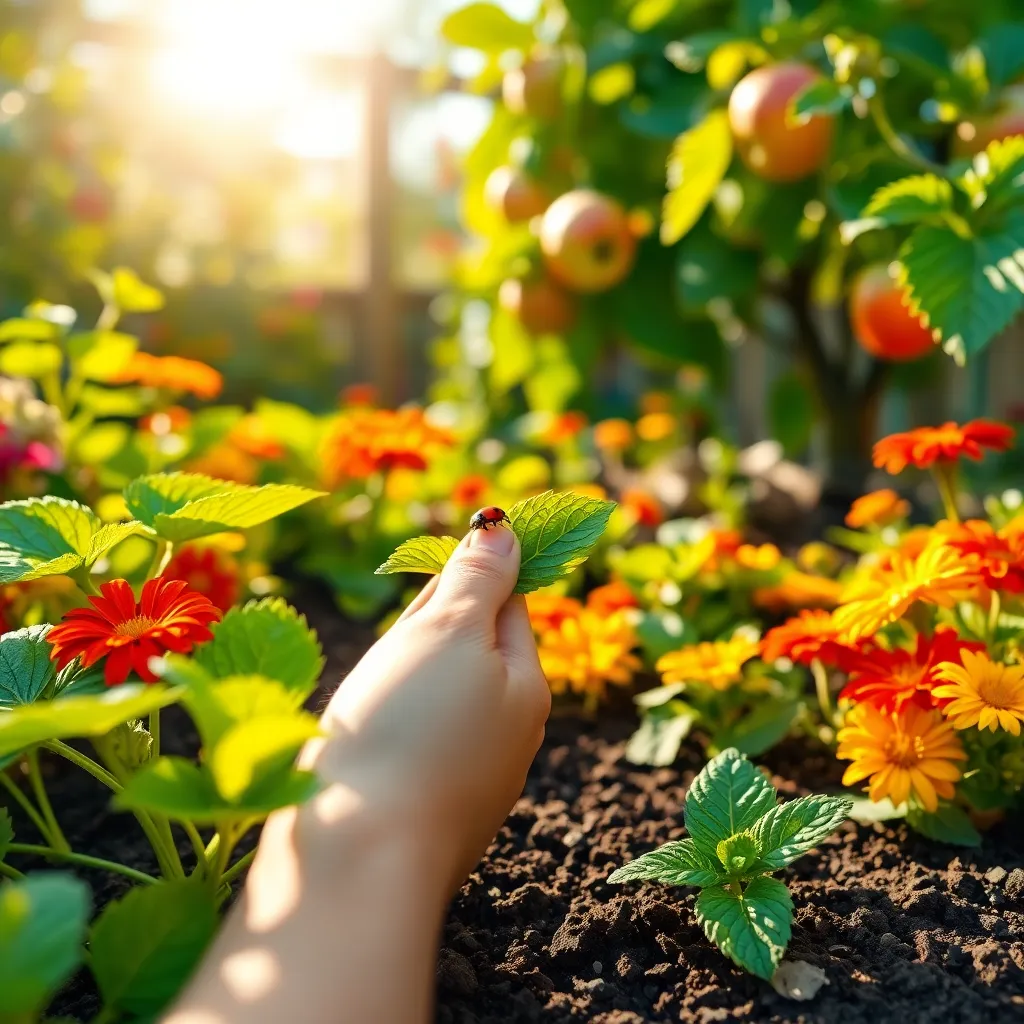
Natural pest control methods are essential for maintaining a healthy fruit garden without resorting to harmful chemicals. Encourage beneficial insects like ladybugs and lacewings by planting dill, fennel, or yarrow nearby, which naturally attracts these helpful allies.
Companion planting is another effective strategy to deter pests. For instance, planting marigolds near fruit plants can help repel nematodes, while basil can deter flies and mosquitoes from tomatoes.
Regularly inspect your plants for early signs of pests, such as aphids or caterpillars, to manage infestations before they spread. Handpicking these pests or using a gentle spray of water can often suffice to control small populations and prevent damage.
For more stubborn pest problems, consider using homemade solutions like neem oil or a mixture of dish soap and water. This approach is especially effective against soft-bodied insects, ensuring your fruit garden remains productive and healthy without harming the environment.
Basic Pruning for Healthier Growth
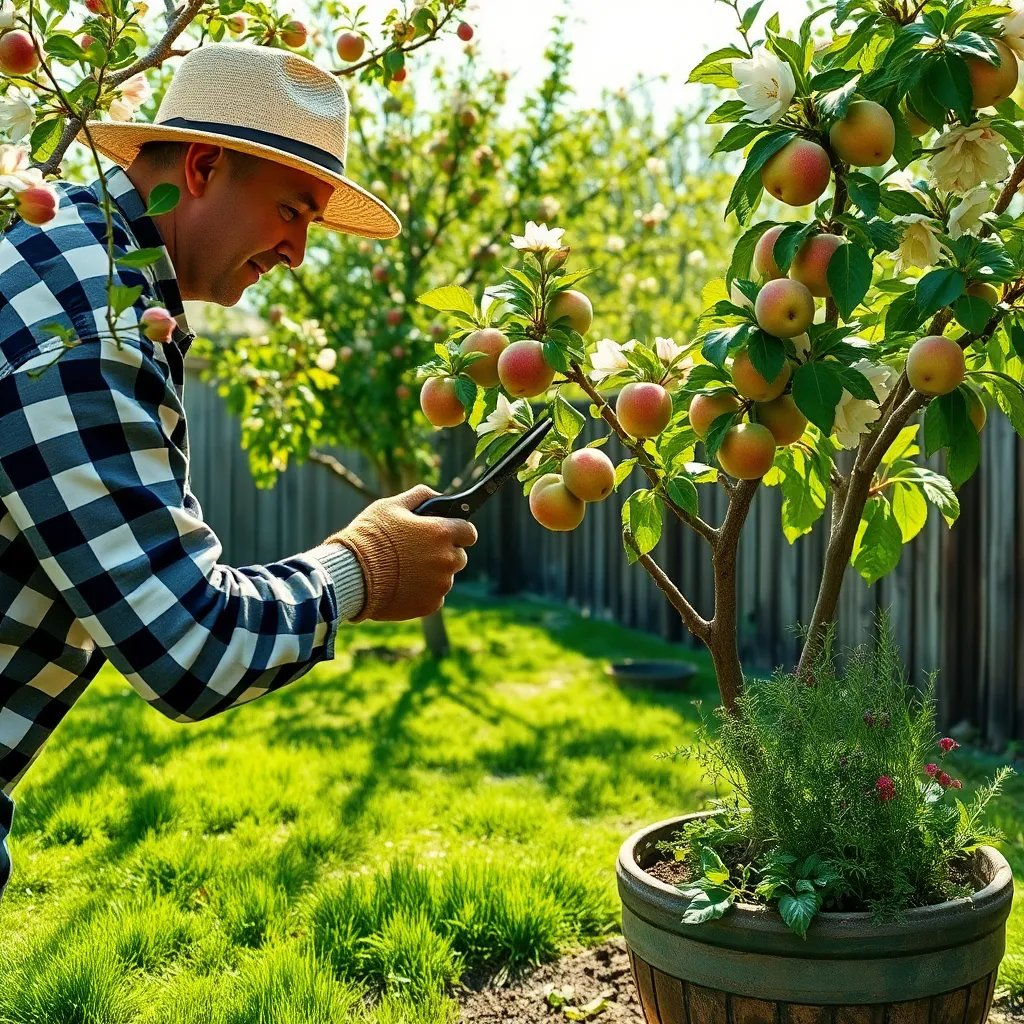
Pruning is an essential practice that promotes healthier plant growth and improves fruit production. By removing dead or diseased branches, you help your fruit trees and shrubs focus their energy on producing robust new growth.
Make sure to use clean, sharp tools to avoid damaging your plants. Pruning shears or a pruning saw are ideal choices depending on the size of the branches.
Avoid pruning in late summer or early fall, as this can stimulate new growth that may not harden before winter. Instead, most fruit-bearing plants benefit from being pruned in late winter or early spring before new growth begins.
For beginners, it’s helpful to start with simple thinning cuts, which involve removing branches at their point of origin. This method improves light penetration and air circulation, reducing the risk of fungal diseases.
Advanced gardeners might consider heading cuts to encourage bushier growth. This involves cutting a branch back to a bud, which can stimulate the plant to produce more lateral branches and ultimately more fruit.
Harvesting Tips for Beginners
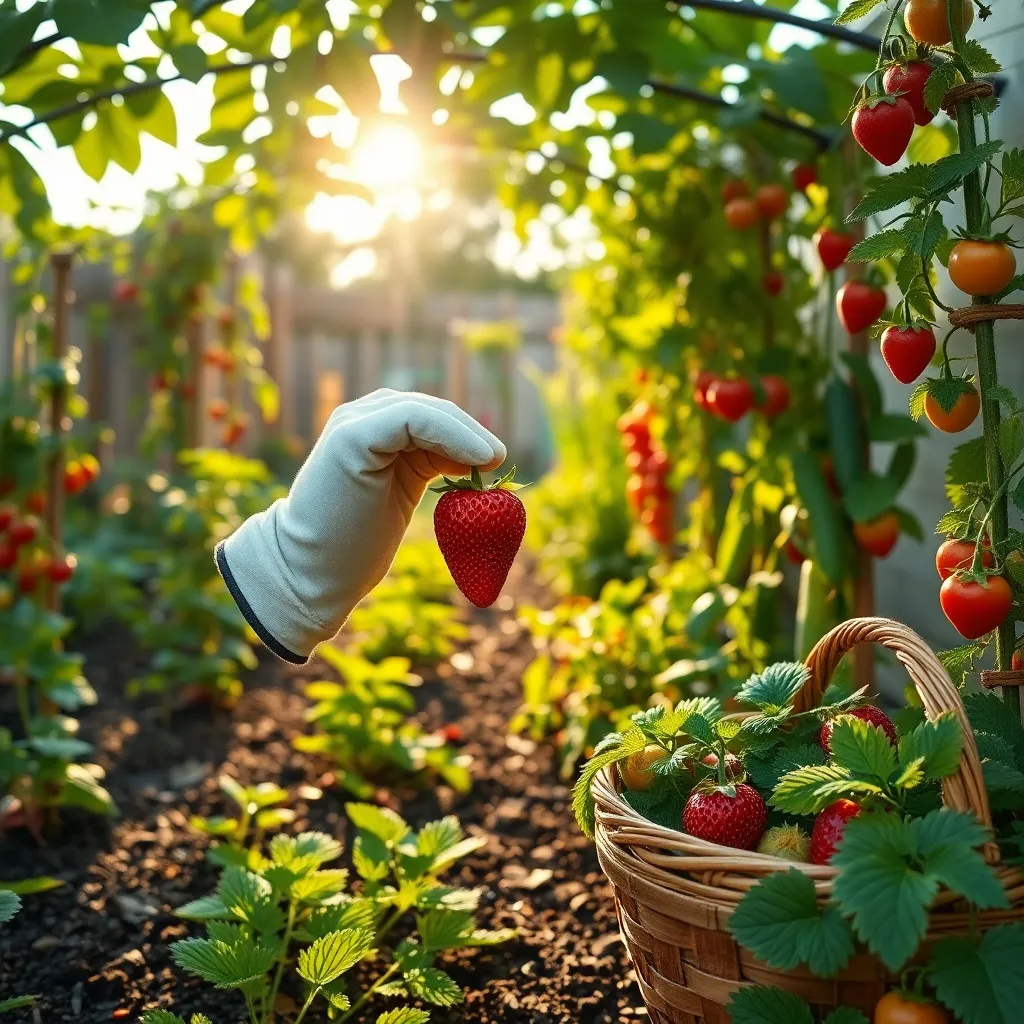
Timing is crucial when it comes to harvesting fruits, as picking too early or too late can affect flavor and texture. It’s important to understand the specific harvest time for each fruit in your garden, which may vary depending on the variety and growing conditions.
For beginners, it’s helpful to start with fruits that have clear signs of ripeness, like strawberries, which should be fully red before picking. Observe the color change as a primary indicator, and gently tug the fruit; it should come off easily if ripe.
Another practical tip is to use clean, sharp scissors or pruners to cut fruit stems, which helps prevent damage to the plant. Harvesting regularly encourages plants to produce more fruit, so make it a routine to check your garden every few days.
Ensure you handle fruits carefully to avoid bruising, especially for delicate ones like blueberries, which should be gently rolled off the stem. Store harvested fruits in a cool, shaded area if you’re not consuming them immediately, as this preserves their freshness and flavor.
Seasonal Maintenance Made Easy
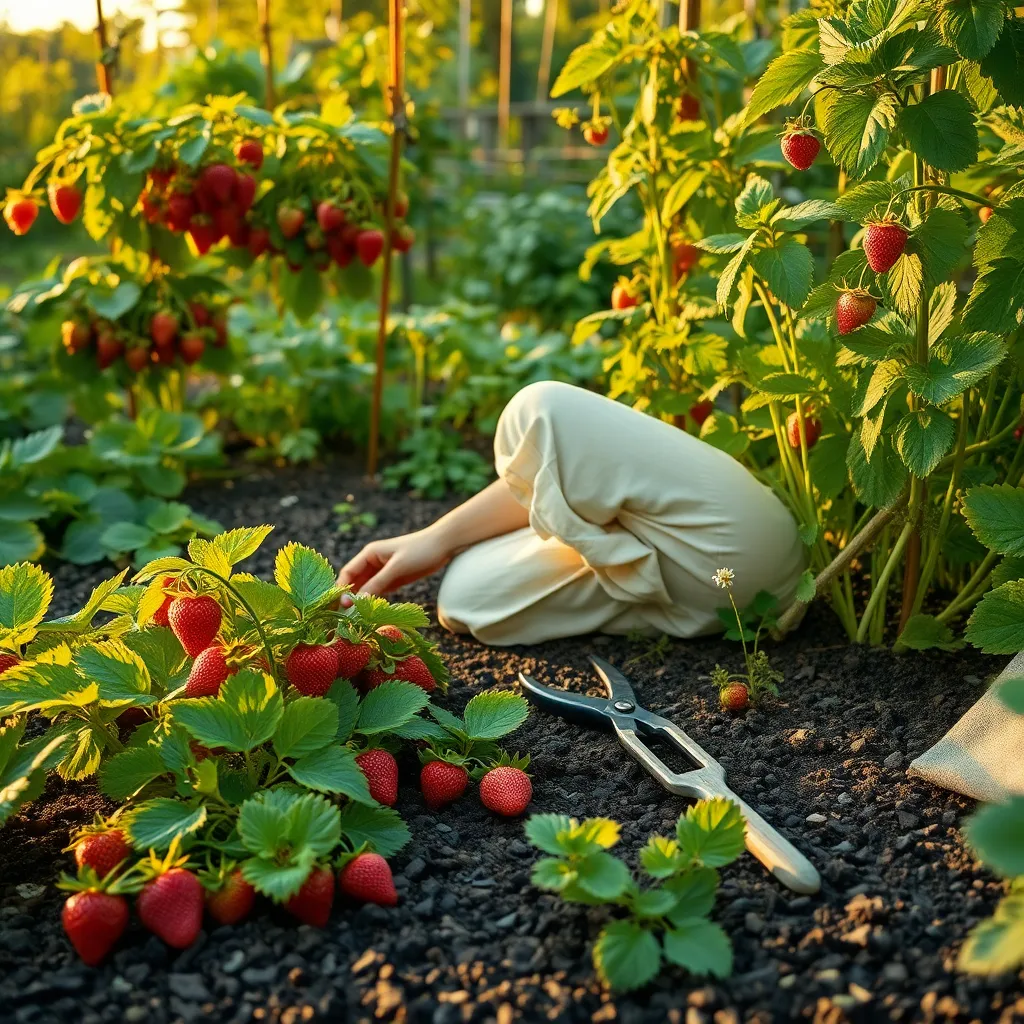
Seasonal maintenance is crucial for a thriving fruit garden, and understanding the specific needs of your plants can make all the difference. Begin by regularly inspecting your plants for signs of disease or pests, as early detection can prevent widespread issues.
In early spring, focus on preparing your soil for the growing season. Incorporate plenty of organic matter, such as compost or well-rotted manure, to improve soil structure and fertility, ensuring your fruit plants have the best start possible.
Summer brings warmer temperatures and increased plant growth, so consistent watering becomes essential. Water deeply but less frequently to encourage deep root systems, and consider using a layer of mulch to retain moisture and suppress weeds.
As autumn approaches, it’s time to think about pruning and preparing your plants for winter. Remove any dead or damaged branches to maintain plant health, and apply a thick layer of mulch around the base of your plants to protect roots from frost.
For fruit trees, consider applying a dormant spray in late winter to prevent overwintering pests and diseases. Always follow the instructions on the label for safe and effective application, ensuring your trees are ready to burst into life come spring.
Conclusion: Growing Success with These Plants
In exploring ’10 Beginner-Friendly Fruit Garden Inspirations,’ we’ve unearthed some delightful parallels between nurturing a garden and cultivating a thriving relationship. From the foundational planting of trust and communication to the seasonal pruning of old habits, each concept serves as a gentle reminder of the care and attention relationships require to flourish. Just as a budding garden needs sunlight, patience, and love, so too does a relationship thrive on shared experiences, understanding, and encouragement.
Now, your actionable next step is to identify one ‘seed’ you can plant today—whether it’s a heartfelt conversation, a handwritten note, or planning a shared activity. This small act can be the start of something beautiful. As you embark on this nurturing journey, remember to save or bookmark this article to revisit these inspirations whenever you need a gentle nudge or reminder.
As you continue to tend to your relationship, envision the abundant harvest of joy, connection, and growth that awaits you. With dedication and compassion, there’s no limit to the success you and your partner can achieve together. Here’s to cultivating love that blossoms and endures through all seasons.

